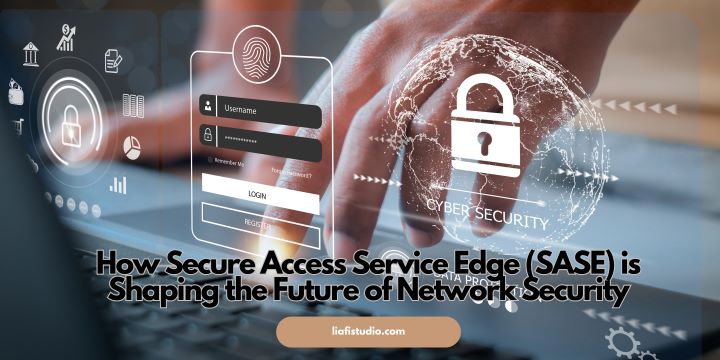Key Takeaways
- Understanding the concept and benefits of SASE
- Examining the role of SASE in current cybersecurity landscapes
- Identifying changes in network engineering due to SASE adoption
- Discerning challenges and considerations for implementing SASE frameworks
- Best practices in transitioning to a SASE architecture
Table of Contents
- What is Secure Access Service Edge?
- The Advantages of SASE Models
- Current Trends in Network Security and SASE’s Role
- SASE Adoption: Challenges and Considerations
- Structuring Networks for Enhanced Security and Performance
- Transitioning to SASE: A Step-by-Step Guide
- Future Predictions: Where SASE is Headed
What is Secure Access Service Edge?
As the digital business grows increasingly prevalent, so does the need for a robust, adaptive network security infrastructure. Secure Access Service Edge, commonly known as SASE, is a pivotal response to this growing need. This innovative framework combines comprehensive networking capabilities with stringent cybersecurity measures to create a seamless, secure data and resource access environment. SASE encapsulates various security services within a single cloud-delivered model and ushers in an era of reduced complexity through integrated solutions. For those probing into what is SASE, it exemplifies a strategic confluence of technologies designed to facilitate agile, secure access for organizations’ dispersed workforces.
The Advantages of SASE Models
Adopting a secure access service edge model offers many advantages that forward-thinking businesses must consider. Integrating networking and security into a single cloud-based service simplifies IT infrastructure, expediting policy enforcement and network management. Moreover, SASE’s inherent scalability supports rapid business expansions and contractions without service disruptions. Cost efficiency is also a prominent benefit, given the model’s capacity to replace expensive, rigid hardware-centric designs with flexible, subscription-based services. As organizations increasingly shift to cloud platforms and their workforces grow more mobile, it provides a secure, consistent user experience — a linchpin for maintaining productivity and security in a digital-first corporate landscape.
Current Trends in Network Security and SASE’s Role
Modern businesses face a barrage of sophisticated cybersecurity threats that demand a new approach to network security — one that secure access service edge aptly fills. The diversified landscape of network architectures, from vast corporate data centers to remote endpoints, calls for a holistic security solution that can scale and adapt rapidly. It is precisely where the secure access service edge framework shines, providing versatile and pervasive protection no matter where resources and users are located. Research and analysis by industry leaders indicate that the amalgamation of direct cloud architecture with comprehensive security functions inherent in SASE is the answer to today’s fragmented cybersecurity environment. As a result, SASE plays an instrumental role in modernizing cybersecurity strategies.
SASE Adoption: Challenges and Considerations
Although the prospect of a SASE-enabled network infrastructure is appealing, its adoption comes with challenges. A primary concern is ensuring that existing infrastructure aligns with SASE capabilities, as many organizations operate on legacy systems that may resist seamless integration. Interoperability between various security services and network components also poses hurdles that require strategic forethought. Additionally, the effective deployment of SASE depends on the ability of IT teams to manage and maintain oversight over a consolidated security ecosystem. Furthermore, businesses must contend with staff readiness, as transitioning to a SASE model often necessitates upskilling or reskilling to manage the new system effectively.
Structuring Networks for Enhanced Security and Performance
With the rise of SASE, the approach to network engineering is evolving, centering around the needs of distributed users and the secure accessibility of data. Traditional perimeter-based security models give way to dynamic policies based on user identity and context, thus allowing for a more responsive and protective network architecture. The shift towards SASE also means that performance and security are no longer mutually exclusive; they instead merge to provide a user experience accessible from friction yet uncompromising on data protection. This harmonious integration ensures that the security measures, including threat detection and response protocols, are consistently enforced, irrespective of the data’s physical location or the access origin point.
Transitioning to SASE: A Step-by-Step Guide
Successfully transitioning to a SASE-centric network security model demands a systematic approach. The process begins with a detailed analysis of the network architecture and security protocols in place, followed by a determination of how SASE can best satisfy the company’s unique scalability, performance, and security requirements. The roll-out of SASE services should be staged and carefully calibrated in each phase to ensure seamless integration. Maintaining close collaboration between IT departments and service providers throughout the process is essential to address any emerging challenges proactively. As the SASE landscape evolves, ongoing monitoring and fine-tuning will become critical to maintaining an effective SASE posture.
Future Predictions: Where SASE is Headed
According to the story around SASE’s future, it will be a crucial component of next-generation network security. It is poised to incorporate even more sophisticated features, such as AI-driven security operations and advanced analytics, enhancing its ability to preempt and nullify threats in real time. The support of SASE in meeting the demands of an increasingly decentralized workforce is undeniably essential. As digital transformation accelerates, implementing SASE architectures is expected to standardize, enabling businesses to navigate the complexities of modern network security with greater ease and confidence. This progressive trend is echoed by prominent sectors within the tech industry, which consistently demonstrate SASE’s rising prominence within the cyber security dialog as a linchpin for secure and adaptable enterprise networking strategies.








